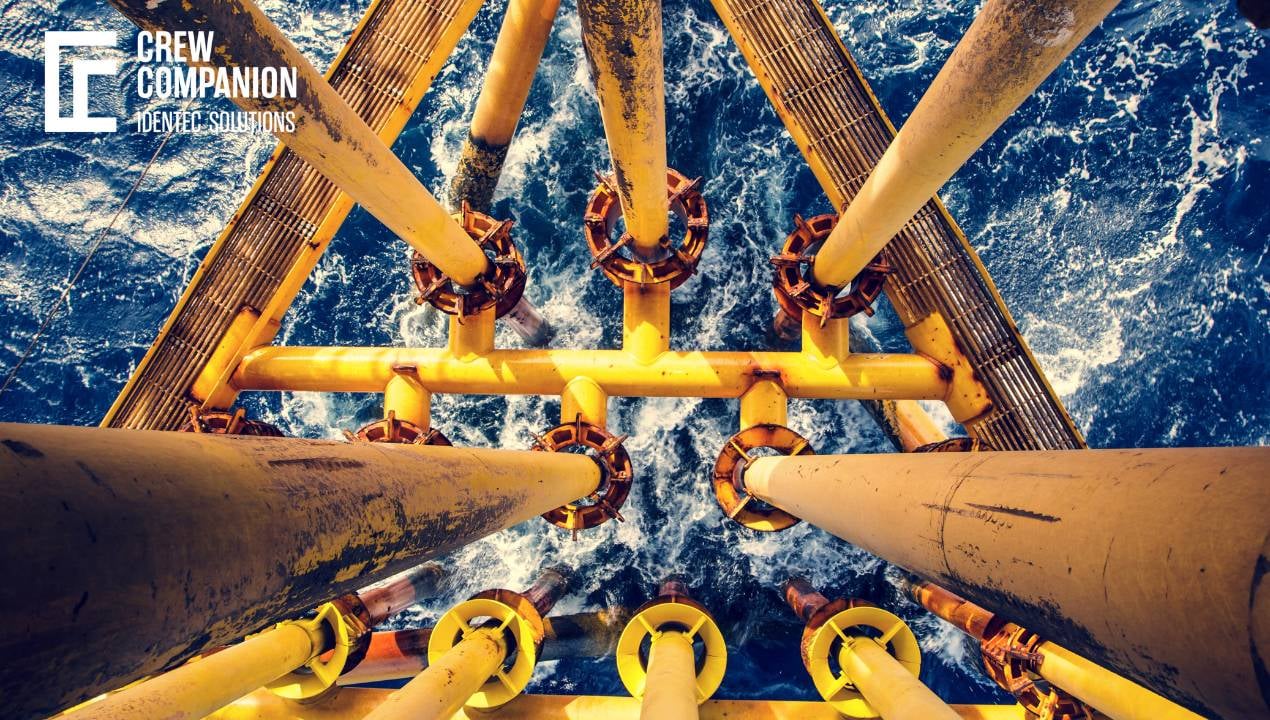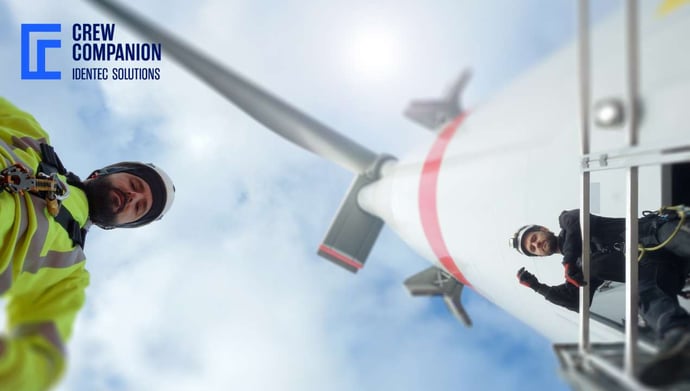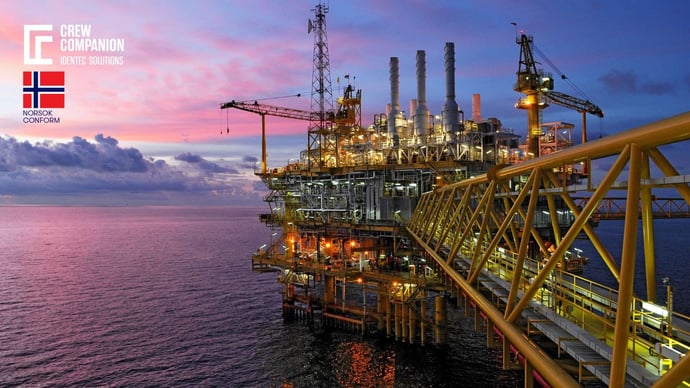Wind Farm Operations: Roles of HSE in Offshore Settings
| Written by Michal Wozniakowski-Zehenter

No video selected
Select a video type in the sidebar.
Importance of HSE in Wind Farm Operations
Offshore wind farm operations are complex and demanding, requiring a high level of safety and sustainability to operate effectively. While responsible for ensuring that these wind farms operate that way, the HSE department also plays a critical role in developing and implementing safety procedures and protocols, training workers, monitoring and evaluating offshore wind farm operations, emergency response planning and execution, and promoting a culture of safety.
The Global Offshore Wind Health Organization Incident Report highlights (source) that in 2021 alone, there were 780 reported incidents resulting in 106 recordable injuries, fortunately with no fatalities, but 72 lost or restricted workday ones, and 34 medical treatment accidents.
The number of hours worked increased by a staggering 28% compared to the previous year, mainly due to the construction of offshore wind farms, which saw an increase from 14.9 million to 19.1 million hours. As more offshore wind farms become operational, there is a steady and progressive increase in the hours worked.
HSE's daily life in wind farm operations
Developing and implementing safety procedures and protocols is one of the HSE's fundamental roles. The department ensures that all aspects of offshore wind farm operations, from construction to maintenance and decommissioning, are covered by comprehensive safety procedures and protocols.
It also ensures that all workers are trained in safety procedures and protocols and have access to the necessary equipment and tools to work safely. Regular training and refresher courses are conducted to ensure that workers remain up-to-date, thereby maintaining safety standards and reducing the risk of accidents or incidents.
Monitoring and evaluating offshore wind farm operations is another crucial role. Regular inspections and audits are conducted to identify potential hazards and risks, recommend corrective actions, and ensure that offshore wind farm operations comply with relevant health, safety, and environmental regulations. HSE's work in this area ensures that safety and sustainability are at the forefront of offshore wind farm operations, reducing the negative impact on the environment and ensuring the safety of workers and stakeholders.
The HSE department is also responsible for emergency response planning and execution by working closely with other stakeholders, including emergency services, to develop and implement emergency response plans and procedures that minimize the impact of any accidents or incidents that may occur (read more about RFID mustering).
The department also ensures that workers are trained in emergency response procedures and that the necessary equipment and resources are available to respond quickly and effectively to emergencies, thereby minimizing the risk of loss of life and damage to the environment.
Promoting a culture of safety in offshore wind farm operations is the final key role of the HSE by developing and implementing safety campaigns and initiatives to raise awareness and promote a culture of safety among workers.
In addition, the department works with stakeholders to create and implement sustainability initiatives that help to minimize the impact of offshore wind farm operations on the environment. HSE's work in this area helps to ensure that offshore wind farm operations remain sustainable and safe for all stakeholders involved, enhancing the industry's reputation and promoting its growth.
Learn more about how to solve Offshore HSE and incident response management.

THE BIGGEST POTENTIAL RISK - The NACELLE
Despite efforts to improve safety in wind turbine nacelles, the number of incidents and injuries remains a concern. In 2021, the nacelle saw the highest number of recorded incidents and injuries, totalling to 91 - a 16% increase from the previous year and the third-highest on record.
However, there is some good news, as a result of improved turbine design and maintenance practices that minimize hazards and standardized procedures within the turbine, the number of recordable injuries has significantly reduced to 9, the lowest ever recorded.
Unfortunately, lifting operations continue to be the main cause of most incidents, with a 53% increase from the previous year. This highlights the need for better training and safety protocols around those operations.
Furthermore, 30 high-potential incidents occurred within the nacelle, 88% more than in 2020, and the third-highest on record. These high-potential incidents serve as a warning sign that more needs to be done to ensure the safety of workers in this specific part of the turbine.
Although reducing recordable injuries is a step in the right direction, it is crucial to prioritize safety in the nacelle. The wind industry must remain vigilant in identifying and mitigating hazards to prevent incidents and injuries in the future. By implementing effective safety measures and best practices, the industry can work together to reduce incidents and ensure the safety of all workers.
CTVS AS THE SECOND HIGH RISK
As offshore wind farms become more prevalent, Crew Transfer Vessels (CTV) have become an essential mode of transportation for workers. However, the increasing number of incidents involving CTVs has become a significant concern for the industry.
With 85 incidents reported in 2021, an 8% increase from the previous year, those vessels have become a focal point for safety improvement efforts. However, the high potential incidents, matching last year's number and setting a new record low, were still a cause for alarm, with 18 incidents reported.
Most incidents occurred during transit, with 32% being high potential incidents, while nine incidents involved lifting, representing a significant increase of 125% compared to the previous year, with 44% of these incidents being high potential. These incidents can have a wide-reaching impact on many individuals, considering the crucial role of CTVs in transferring personnel to and from wind farms. Therefore, there is a need to improve safety onboard.
It is crucial to implement measures that ensure the safety of workers on the transfer vessels, as it is the industry's responsibility to provide a safe working environment. The offshore wind industry is continually evolving, and safety must remain a top priority to guarantee the industry's success.
By improving safety onboard CTVs, the industry can ensure that workers are protected and their well-being is safeguarded.
Introduction The technological developments and their implications on HSE
The role of health, safety, and the environment is ever-changing around wind farms offshore due to continuous technological advancement at incredible speeds. New technologies being adopted in the operations and maintenance processes of offshore wind farms include drones, robotics, and artificial intelligence for efficiency and safety improvements. For example, drones are deployed in turbine inspections where workers would have otherwise performed risky jobs high above the ground. The employment of robotics is underway to assist in the maintenance and repair of underwater components, reducing dangerous underwater conditions to which human workers can be exposed. Besides this, AI systems are now applied to predict equipment failures, thus enabling preventive maintenance that can reduce the chances of accidents caused by malfunctioning machinery. These technologies not only ease operations but also help in HSE by reducing risks and reducing the number of workers exposed to high-risk environments. On the other hand, all these technologies require new safety measures and specialized training for their effective and safe use. The further transformation of the offshore wind industry because of technological change will remould and reshape the job responsibilities of the HSE department through constant adaptation to the changes. In the case of growth in the industry, the development in this aspect will face serious challenges. The right balance between human oversight and technological innovation holds the key to a safe, sustainable, and efficient offshore wind energy sector.
FAQ's
What are the biggest risks in Offshore Wind Farm operations?
- Offshore wind farms are becoming increasingly popular as the world seeks alternative energy sources. However, while the benefits of this form of energy production can be overstated, working in such an environment is full of risks. Workers in offshore wind farms are exposed to various dangers that can cause physical harm and even fatalities. These risks range from accidents caused by equipment malfunctions to the unpredictable forces of nature, such as storms, hurricanes, and high waves. Additionally, environmental hazards such as exposure to hazardous chemicals and gases, as well as transportation uncertainties, are significant threats to workers' safety. Electrical hazards, communication barriers, and fire risks are other potential hazards that workers must face. Learn more about HSE standards in the North Sea ...
How big is the HSE department responsible for Offshore Wind Farm operations?
- When it comes to staffing the Health, Safety, and Environment (HSE) department in an offshore wind farm, it's crucial to consider the size and complexity of the project. A larger wind farm, for instance, may require staffing with a strong team consisting of several dozen or even hundreds of professionals. These professionals may include environmental engineers, safety inspectors, health and safety officers, and emergency response coordinators. On the other hand, a smaller wind farm may require only a few specialists with expertise in specific areas. Regardless of the size of the wind farm, it's vital to ensure that the HSE department is adequately staffed to guarantee the safety of personnel and the environment.
What kind of training HSE department provides for offshore wind farm operations?
- Offshore wind farms require a comprehensive range of training to guarantee the safety of their personnel. The HSE department ensures that new staff undergo safety induction training to familiarize them with the project's health, safety, and environmental policies and procedures, technical training on equipment use and maintenance, and emergency response and environmental awareness training. Additionally, workers are trained on working at height and using personal protective equipment (PPE) to prevent falls and other accidents.
TAKEAWAY
In conclusion, the HSE is a critical component of offshore wind farm operations, ensuring that they are conducted safely, sustainably, and efficiently. The department's responsibilities include developing and implementing safety procedures and protocols, training workers, monitoring and evaluating offshore wind farm operations, emergency response planning and execution, and promoting a safety culture. The offshore wind energy industry's growth depends on HSE's work, ensuring that it continues to expand safely and sustainably, providing clean energy for generations to come.
Dive deeper into one of our core topics: Emergency Response Management
Sources:
(1) https://www.researchgate.net/publication/378342754_Implementing_health_and_safety_standards_in_Offshore_Wind_Farms
(2) https://www.bsee.gov/sites/bsee.gov/files/tap-technical-assessment-program//686aa.pdf
Note: This article was updated on the 27th of September 2024

Author
Michal Wozniakowski-Zehenter, Marketing Manager
Michal Wozniakowski-Zehenter is an experienced marketing and project management professional. He spent most of his career on projects with a strong focus on digital marketing and event management. He is a very active voice representing offshore and mining industries through social media channels. Michal writes mainly about offshore oil and gas, renewable energy, mining and tunnelling. Compiling and sharing the knowledge within industries is one of his goals.






